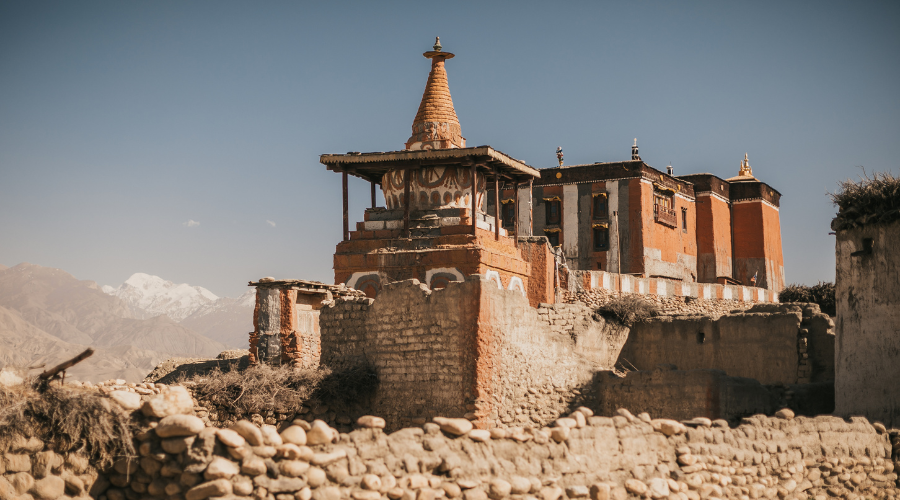
Upper Mustang Trekking Permits and Costs

Upper Mustang Trekking Permits and Costs
swotah travel
2644
25, 02 2024
Upper Mustang, situated in the north-central region of Nepal, has a rich history as the former Kingdom of Lo Manthang. In 1795, it was incorporated into Nepal by King Prithvi Narayan Shah, yet it has preserved its distinct cultural identity. This region is renowned for its Tibetan Buddhist traditions, ancient caves, and landscapes reminiscent of deserts, alongside its historical significance and natural beauty.
The area, believed to have been settled by humans between 2,000 and 3,000 years ago, was originally inhabited by the Lopas or Lobas, among other ethnic groups such as Nyingma, Kagyu, Bon, and Sakya sects of Buddhism. Despite its annexation, Upper Mustang is often referred to as the "Forbidden Kingdom" due to restrictions on foreign visitors until 1992, although trekking was permitted starting in the late 1970s.
The prohibition against constructing tea houses and lodges by the local populace has historically preserved its secluded nature. Travel agencies were once responsible for providing all necessary supplies for their clients. However, the region has evolved, and now, numerous tea houses and lodges facilitate trekking, making the exploration of Upper Mustang's unique heritage and stunning landscapes more accessible.
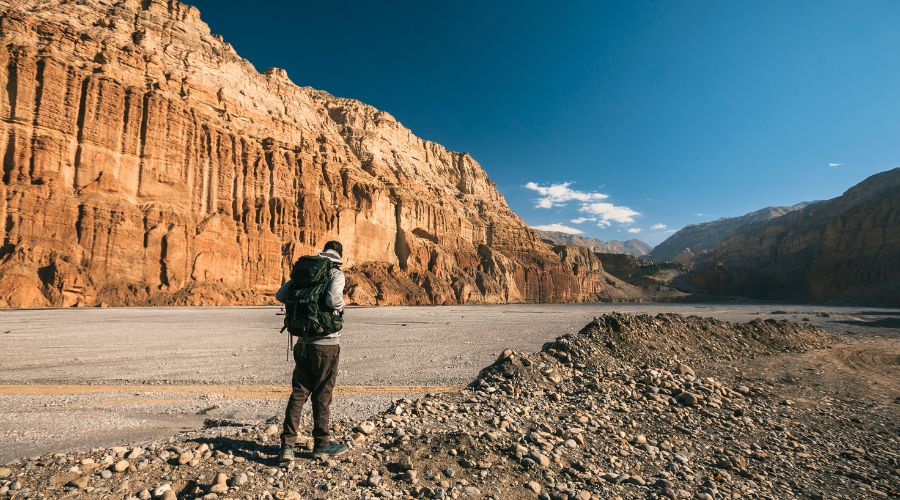
What are the permits required for Upper Mustang Trekking as of 2024?
Upper Mustang, once a secluded kingdom, is now open to explorers from around the globe. However, due to its classification as a restricted area, solo trekking is not permitted. Travelers wishing to experience the unique cultural and natural beauty of Upper Mustang must obtain special permits, emphasizing the need for a certified guide to accompany them. This requirement ensures both the preservation of the area and the safety of visitors.
To trek in the Upper Mustang area, trekkers need 3 permits:
-
Restricted Area Permit
-
Annapurna Conservation Area Permit
-
TIMS(Trekker’s Information Management System)
1. Restricted Area Permit
Nepal is home to several restricted areas located near its border with Tibet. These regions feature minimal human settlement, making trekking within them inherently risky. To mitigate these risks and preserve the pristine condition of Nepal's remote landscapes, the Nepalese government requires trekkers to obtain a Restricted Area Permit (RAP). This permit serves a dual purpose: it facilitates the monitoring of trekkers for their safety and ensures the conservation of the untouched beauty of remote Nepalese territories.
Restricted Area Permits are exclusively issued by the Department of Immigration, located on Kalika Marga in Kathmandu. Individuals interested in trekking in these restricted areas must engage a registered travel agency to handle the permit application process on their behalf.
The cost of a Restricted Area Permit varies depending on the trekking destination. As of 2024, for the Upper Mustang trek, the fee for the permit is USD 500 per person for the initial 10 days. An extra charge of USD 50 per person applies for each additional day beyond this period. This structured fee system helps manage and regulate access to these sensitive regions, contributing to their preservation and the safety of the trekkers.
Related Trekking Packages:
Upper Mustang Teeji Festival Trek
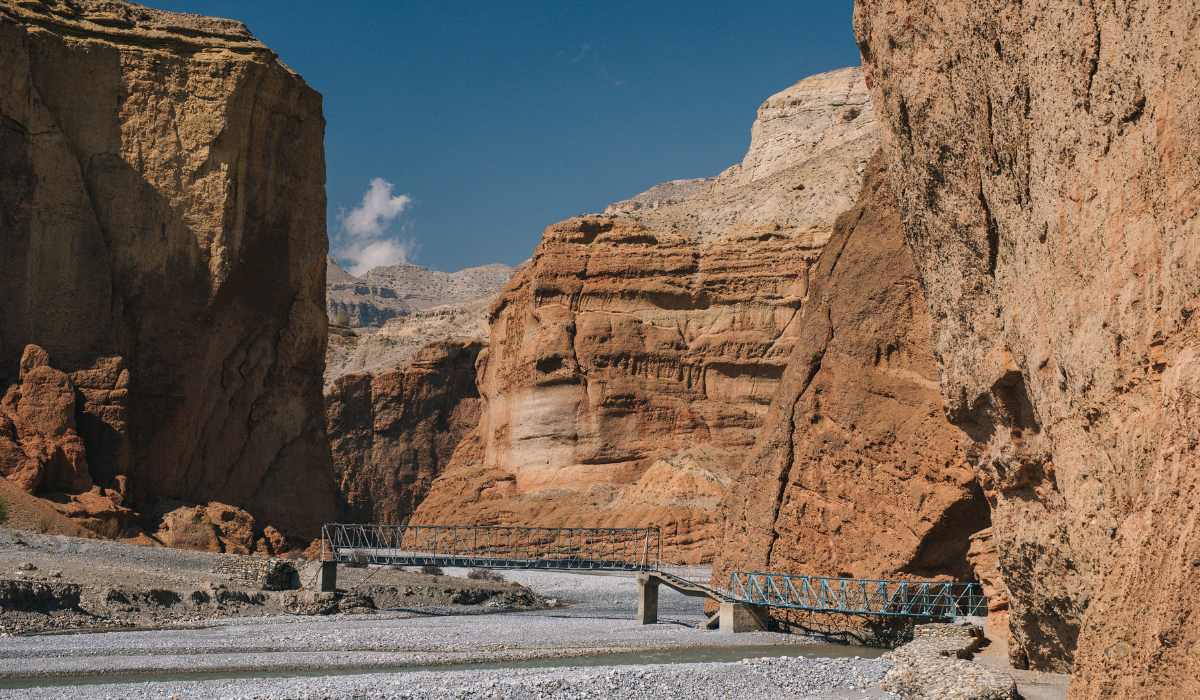
2. Annapurna Conservation Area Permit
Obtaining a conservation area permit is essential for trekkers crossing any conservation area or national park in Nepal. For those planning to explore Upper Mustang, which falls within the Annapurna Conservation Area, acquiring an Annapurna Conservation Area Permit (ACAP) is mandatory. This permit is crucial for maintaining the conservation efforts and supporting sustainable tourism within the area.
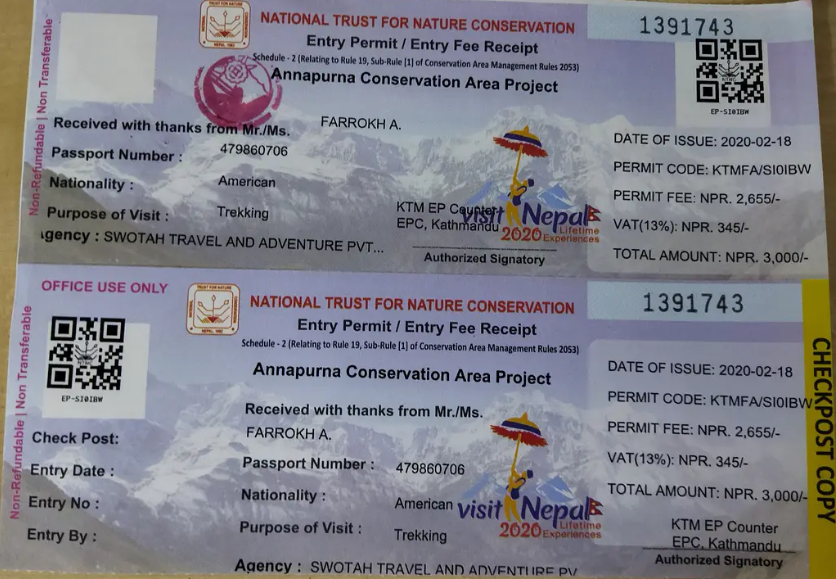
There are several authorized locations where trekkers can obtain an ACAP:
-
The Tourist Service Center at Tribhuvan International Airport in Kathmandu.
-
The Annapurna Conservation Area Permit Office of the Nepal Tourism Board is located in Pokhara.
-
The Department of National Parks and Wildlife Conservation is situated at Babarmahal in Kathmandu.
-
The Nepal Tourism Board office at Bhrikutimandap in Kathmandu.
As of 2023, the cost for an Annapurna Conservation Area Permit is set at Nepali rupees 3,000 (approximately USD 22.63) per person. This fee applies regardless of the duration of the trek within the conservation area. The ACAP fee contributes to the conservation and maintenance efforts, ensuring the Annapurna Conservation Area remains a sustainable and eco-friendly destination for future generations.
3. Trekker’s Information Management System
This is another must-have trekking permit for the Upper Mustang trek. It helps record the trekkers and marks the trekker’s movement. Since April 1st, 2023, one can not get TIMS as a solo trekker (as solo trekking is banned), they need to apply for it through a travel agency. TIMS can be obtained from the Nepal Tourism Board in Kathmandu and the TIMS counter around the trekking area. Cost of TIMS as of 2024: per person Nepali rupees 2000 (USD 15.08) for foreign nationalities and Nepali rupees 1000 (USD 7.54) for SAARC nationalities.
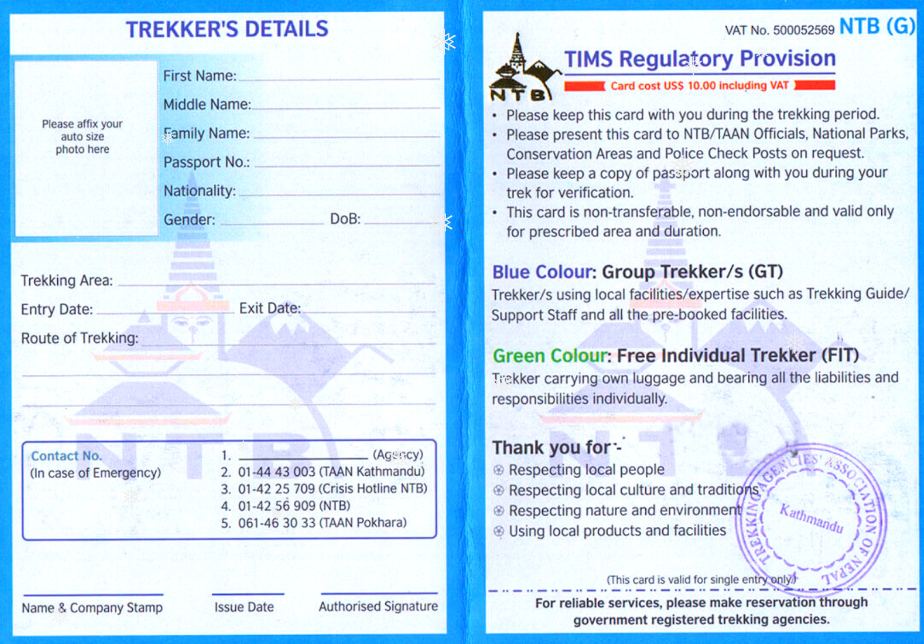
Note: If one takes a flight to Jomsom while going for the trek and returning back, there is no need to get a TIMS card.
Total cost of all the permits required for the Upper Mustang trek per person =
Restricted Area Permit: USD 500 + Annapurna Conservation Area: USD 22.63 + Trekkers Information Management System: USD 15.08. Total= USD 537.61
Note: The costs of ACAP and TIMS are converted to USD according to the rate in September 2023. Check the rate around your trek's time and convert it into USD.
What are things required for TIMS for Upper Mustang?
-
A copy of a valid passport with a validity of 6 months minimum starting the day you land in Nepal.
-
Nepal’s visa
-
Two passport-size photos of trekker
-
One copy of the itinerary of the Upper Mustang trek
-
Details of your trek operators and trek guides
-
Upper Mustang Trek’s entry point and exit point
-
Your entry date in Nepal and exit date from Nepal
-
A copy of a detailed itinerary.
-
Your travel insurance policy number
-
Detailed personal information with emergency contact numbers
What are the things required for the Annapurna Conservation Area permit?
-
Conservation area entry points and exit points
-
Two photocopies of your passport
-
Four passport-size pictures of trekkers
-
Copy of your detailed Upper Mustang itinerary
-
Insurance policy number
-
Emergency contact number
What are the things required for a Restricted Area Permit?
-
Your original passport
-
A copy of the TIMS card
-
A copy of the Annapurna Conservation Area Permit
-
Two passport-size photos
-
A copy of your itinerary.
-
Details of your trek operators and trek guides
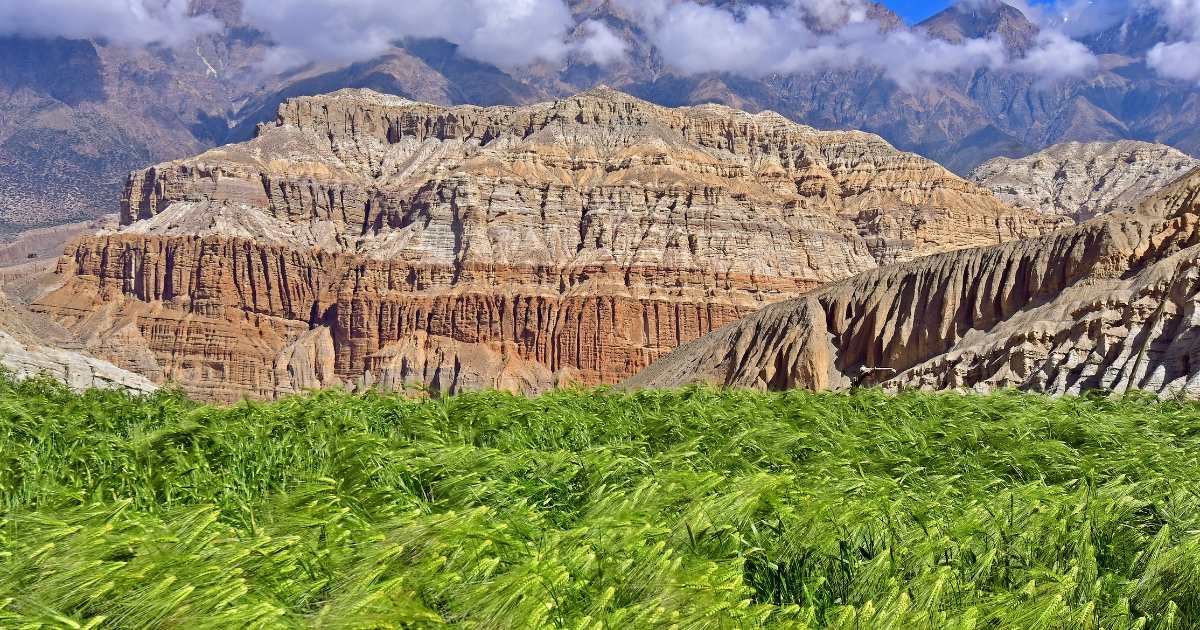
Why are there such strict policies for trekking permits in the Upper Mustang area?
The main intention of the government of Nepal is to protect the Upper Mustang's unique ecosystem and cultural practices and limit the tourists' movement in the area. Having a permit is intended for the betterment of both trekkers and the majestic Upper Mustang. Here are a few reasons why the policies regarding trekking permits are taken so seriously.
-
Conservation of the natural environment
upper Mustang is known as the trans-Himalayan desert, which refers to areas of the Himalayan region that have annual precipitation of less than 20cm. This area experiences very extreme weather changes. According to researchers, the temperature of Upper Mustang increases by 0.048 degrees Celsius per year, and annual rainfall decreases by 3 mm per year. Since this region has unpredictable weather, very dense crowd movements degrade the environment. This results in a higher possibility of natural deterioration like soil erosion and problems in water disposal. Hence to make sure the crowd is in check in the Upper Mustang region, permits are taken very seriously.
-
Upper Mustang’s historical and archeological significance:
This region has many historical places like Muktinath temple, Thubchen Gompa, Ghar Gompa, the walled city of Lo Manthang, etc., and the caves that hold impactful archeological importance. The manmade sky caves near the Kali Gandaki River are sacred sites for the Buddhists of the Upper Mustang region. There are about 10,000 sky caves made by human beings and are believed to be about 2000 years to 3000 years old. Some of these caves are Jhong Cave, Dhakmar Cave, Ghiling Cave, Chhoser Cave, Tashi Kabum Cave, Yara Cave, Tetang Cave etc. The sky caves are often referred to as ‘the pyramid of Egypt’ since some archeologists believe these caves were used to perform religious rituals where dead bodies were preserved (mummification). The sky caves have many Buddhist sculptures, murals, arts and crafts, and manuscripts that reflect the Tibetan Buddhist culture and traditions. So, the permit makes sure these valuables remain unharmed and protected by keeping track of the trekkers visiting the place.
-
Security and monitoring of the trekkers
Around this area, there is very little assistance and help for the trekkers. So, through permits, the records of everyone on the trail are kept so that in case something bad happens or some trekkers get lost it is easier to find them and give them the assistance needed as soon as possible. There are high cases of natural hazards in Upper Mustang out of the blue, in this scenario, the permit record helps ensure everyone on the trail is rescued successfully.
-
Limited infrastructures, facilities, and resources
Upper Mustang has a confined number of accommodations and food supplies. If no permits are kept and tourist flow increases beyond the limit then meeting the demand for food and accommodation gets hard. This leads to a scarcity of food for the locals themselves. Therefore to prevent such situations the policies of the Permit in the restricted areas are taken very seriously.

What happens when you trek without a permit?
If anyone does not follow the rules and treks without getting all the needed permits, the trek is labeled as “illegal trekking,” and there are legal consequences they have to face. First is the monetary fine and compensation. The monetary fine for lacking the TIMS card is Nepali rupees 12000 / USD 90.49.
Not having the Annapurna Conservation Area Permit means a fine of Nepali rupees 2000 / USD 15.08 to Nepali rupees 5000 / USD 37.70, and the restricted area permit’s fine is around Nepali rupees 1000 / USD 7.54 to Nepali rupees 20000 / USD 150.82. The fine amount varies with the severity of the rule violation and the authorities' decision. Apart from the monetary compensation, your trek is stopped right where you are caught without the required permits, and you are deported back to your country. Authorities often time keep the rule violation in their legal record and ban such trekkers from any other trek in the future.
NEWSLETTER SIGNUP
Sign up to receive our trip ideas and travel offers!
Get updates and Exclusive Offers up to 20% Discount








